A nod to tradition with a simple terrine made from summer fruit preserves. This is a special dessert I came up with after I made my first batch of nannyberry butter (Viburnum lentago)
I knew reducing the water and cooking the fruit pulp slowly into a thick concentrate will be great on buttered toast. But, everything is good on buttered toast.
Nannyberry pulp has the consistency of banana after cooking and straining. It has rich, dark overtones of ripe raisin, and, like apples. It needs no added pectin to make a thick jam or puree. Besides the basic fruit puree with it's consistency of apple butter it was hard to find derivative recipes using it.
The obvious first choice with the banana comparison might seem to be banana bread, and you could do that. But, quick breads require a lot of puree, and it seemed like a waste of my nannyberry butter to do that. Persimmon pudding cake and persimmon bread are great though.
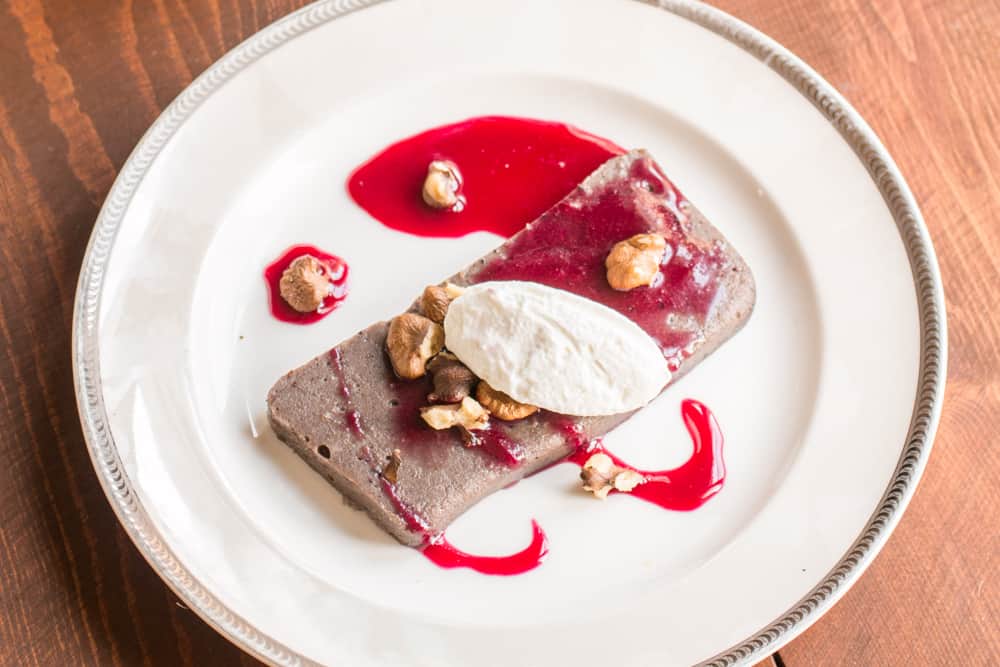
Eventually I found some references to nannyberry pudding. Old recipes for pudding are usually a sort of cake with suet cooked in muslin. I wanted to make a lighter version so I settled on a terrine set with with starch.
A cornstarch version I saw made with water and nannyberry didn't sound very appealing. To improve the flavor, I used dairy scented with spices and turned the the puree into a pastry cream. It's thick enough that it can be un-molded and sliced.
I like the clean look of the slices for desserts like this. They're easy to dress up with a few extra things to direct the flavors however you like. I started experimenting with flavor combinations that would taste good with raisins or bananas.
Using bananas as a flavor reference is probably the best advice I can think of here. Imagine things like orange peels, nuts, and warm spices like nutmeg and ginger.
Coconut could work in the background too. The two examples here are the ones I liked the most. One used an orange custard sauce with sauteed apples, ripe persimmon, and toasted, freshly cracked Butternuts / White Walnuts. The second used whipped cream or creme fraiche, black walnuts, and chokecherry syrup.
If you find yourself wanting something simple, it's just as good with some whipped cream and a drizzle of maple syrup. If you try making the basic terrine below you'll have more than a few slices to experiment with.
One last thing is mousse. When I have thick, sweet purees, I sometimes fold in whipped cream at the end. The air bubbles make the flavor light, like a mousse or Bavarian cream. If that sounds interesting, see my nannyberry mousse that uses the recipe below as a starting point.
Other fruits you can use for this recipe
You need a fruit that can make a thick puree. Apple butter, banana puree, or a coulis of fresh fruits like strawberries or plums will work fine too.
More Fall Fruit
A Fruit Terrine Made with Preserves
Equipment
- 3-4 cup mold, ramekin, or custard dish
Ingredients
- ¾ cup very thick nannyberry butter or apple sauce, or another fruit puree
- 1 cup half and half
- ¼ cup sugar depending on how sweet your nannyberry butter is you might need to add an extra ¼ cup-use your instincts here.
- 4 tablespoons cornstarch + 4 Tablespoons water
- 1 tablespoon fresh lemon juice
- A few scrapes of fresh orange zest finely grated
- Dash Gran Marnier or Tuaca optional
- ¼ teaspoon cinnamon
- 4 tablespoons unsalted butter
- Good pinch of salt
- 2 large egg yolks
Garnishing and Serving Ideas
- Orange Creme Anglaise
- Diced sauteed apples
- Toasted nuts preferably freshly cracked
- Slices or scoops of ripe persimmon
Instructions
- Oil a small 3-4 cup souffle mold, or individual custard dishes, then line with cling film.
- Mix the cornstarch, ¼ cup sugar, egg yolks, orange zest, pinch of salt, lemon and water to make a slurry.
- Heat the nannyberry butter and the half and half, whisking, until hot and steaming, but not boiling.
- Stir in the cornstarch-egg slurry and whisk constantly, keeping the heat at medium, until the mixture thickens, then turn the heat down to as low as possible and continue whisking for a few minutes more, or until you can tell the cornstarch is completely activated.
- Take the pan off the heat and whisk in the butter, then transfer the pudding to the prepared mold(s) and refrigerate overnight, or until the pudding is set and able to be unmolded. Slice with a long sharp knife, wiping off the blade in between every slice for the cleanest result.
- Serve with your choice of garnishes.

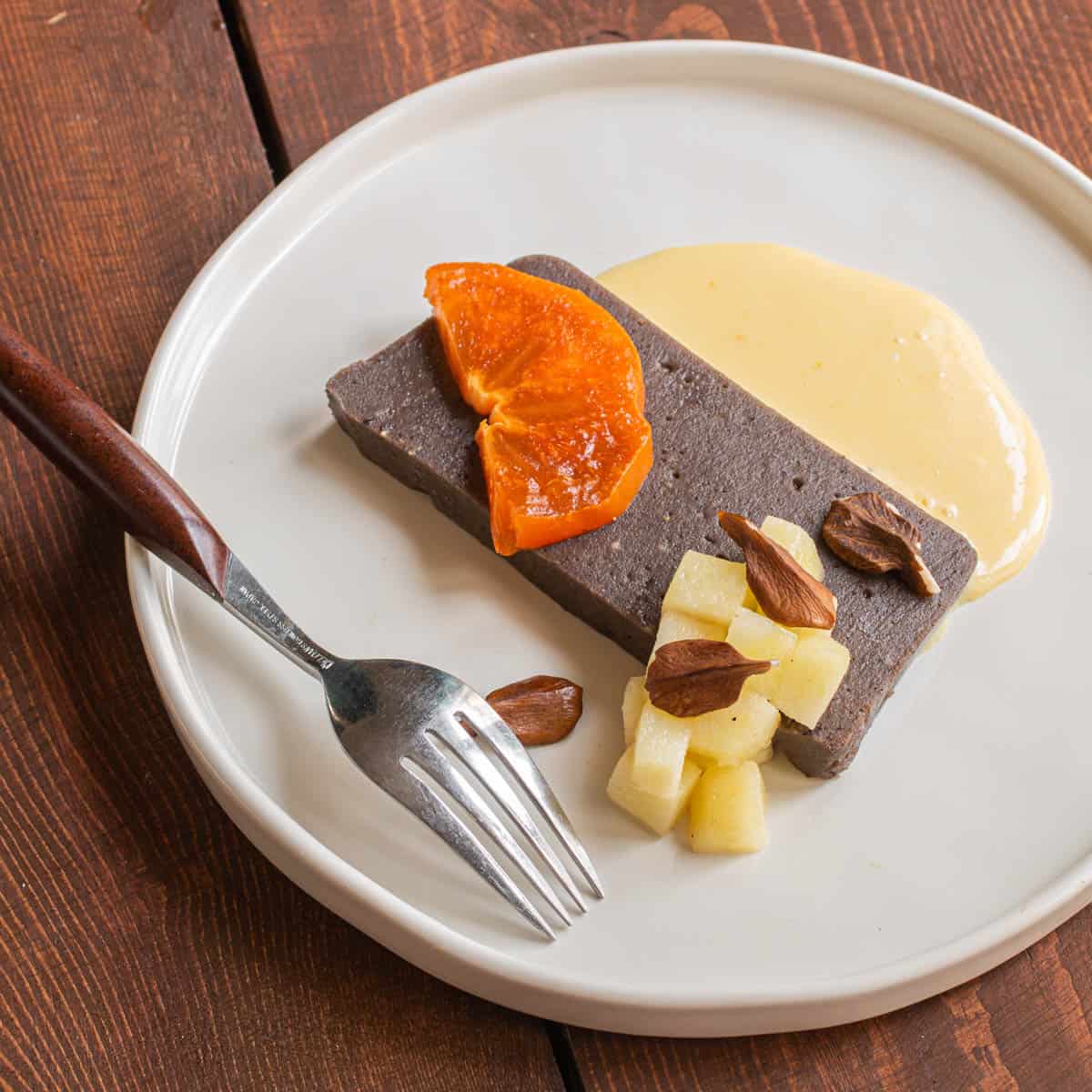
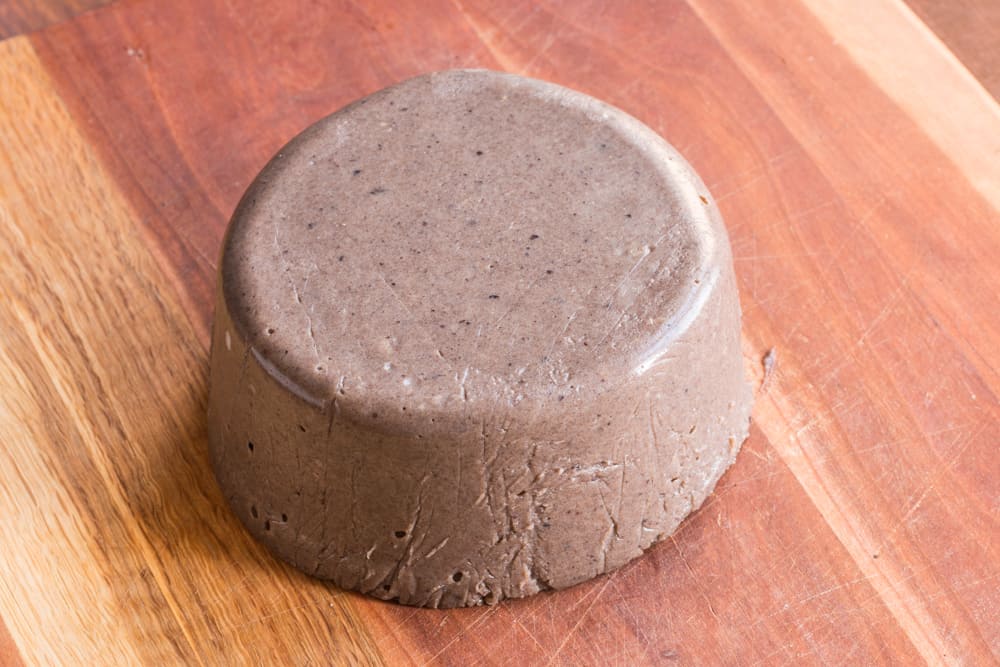
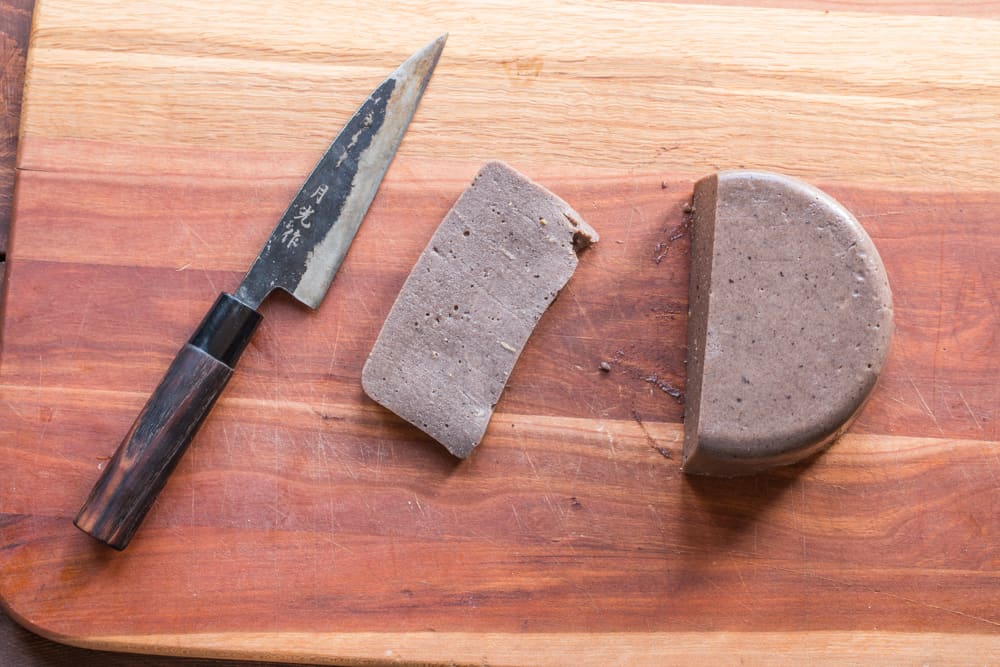
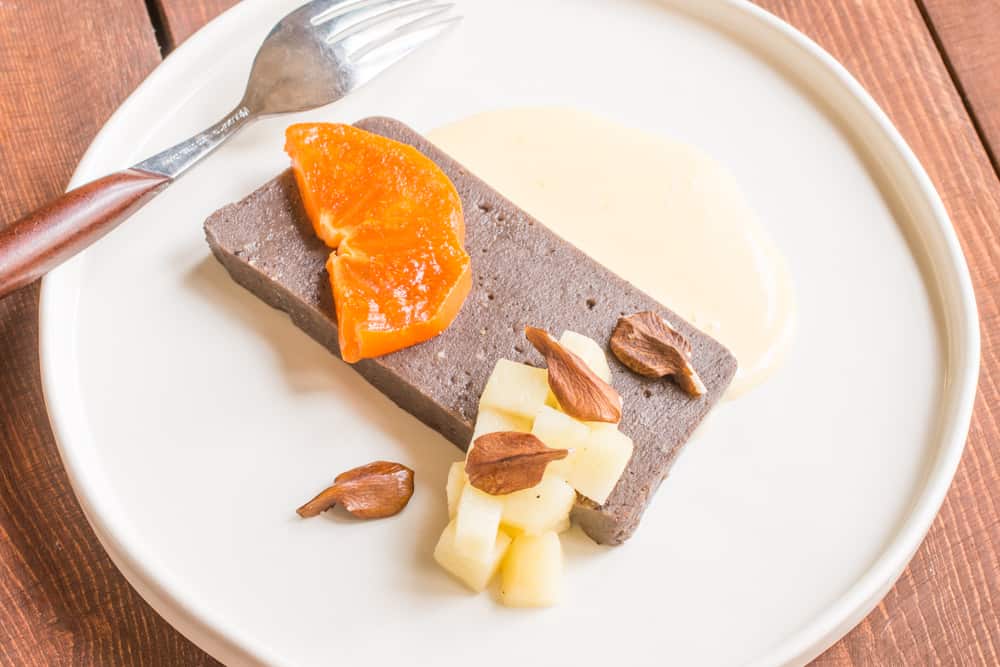

Leave a Reply